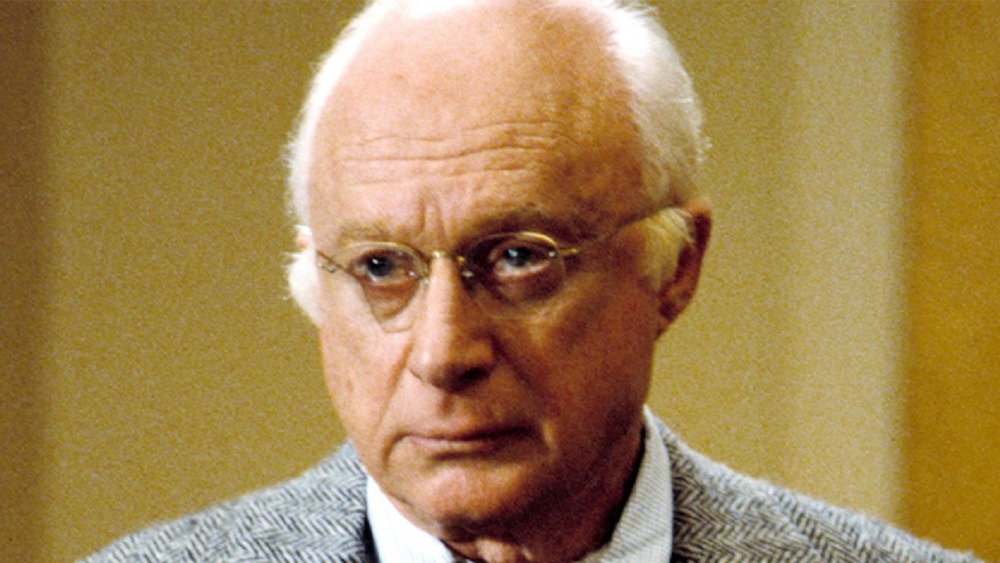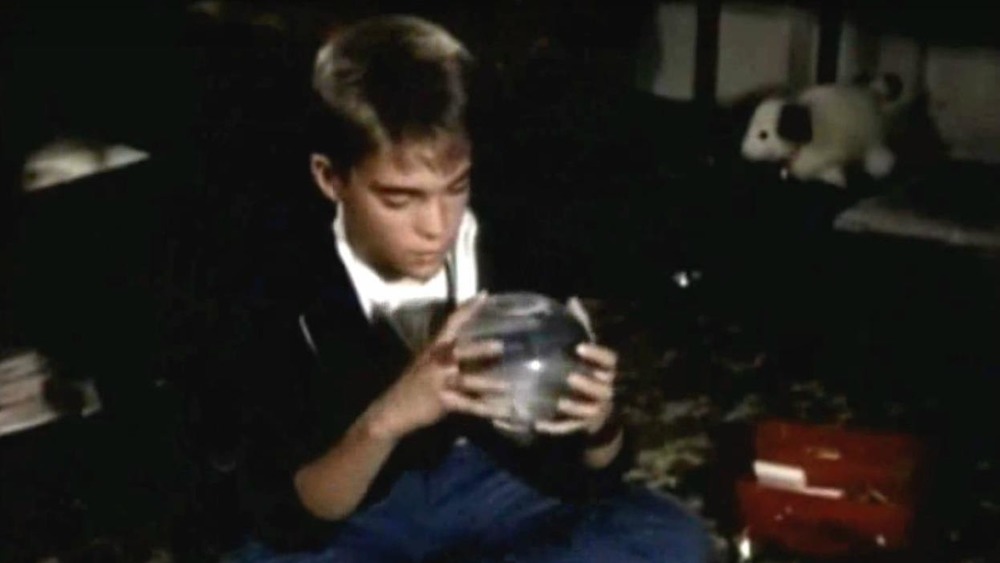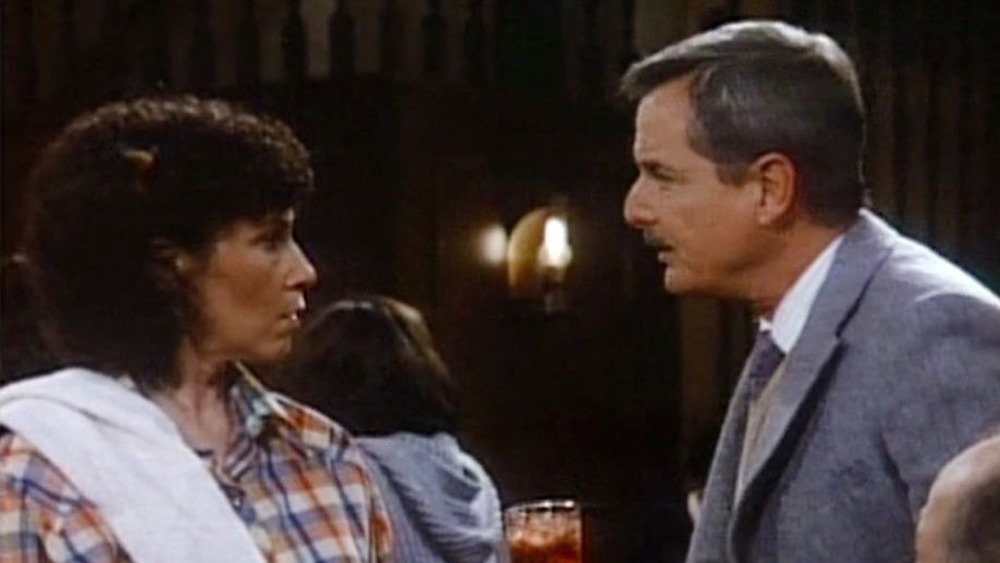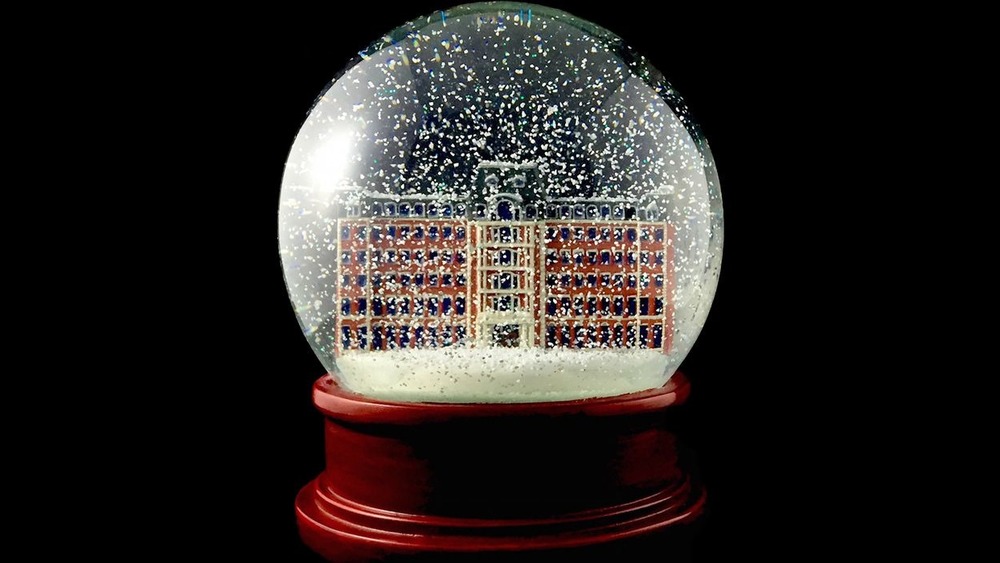The Ending Of St. Elsewhere Explained
If you've ever been riveted by the human drama of E.R. or Grey's Anatomy, then you've got one series to thank. Airing for six seasons from 1982 to 1988 on NBC, St. Elsewhere was the father of the modern medical drama, establishing a format that's been followed by pretty much every serial fitting of that description to come after it. Rather than case-of-the-week stories with infallible doctors and carboard-thin supporting characters, St. Elsewhere followed its flawed, relatable characters over multi-episode storylines and even season-long arcs. The hospital at its center, Boston's fictional St. Eligius, picked up its titular nickname because of its reputation as an aging, poorly-staffed dumping ground for hopeless patients, and the show's urgent, fly-on-the-wall visual style added to its air of gritty realism.
The series sported a large ensemble cast, with veteran actors Ed Flanders and Norman Lloyd anchoring the proceedings for most of its run as Dr. Donald Westphall and Dr. Daniel Auschlander, respectively, and it made household names of up-and-comers like Howie Mandel, Mark Harmon, and Denzel Washington, as well. The series was also known for one of its more playful aspects: it was prone to dropping references and callbacks to other TV series. It wasn't unusual to hear other famous TV doctors and the like paged over St. Eligius' PA system, characters from series like The White Shadow, M*A*S*H*, and The Mary Tyler Moore Show appeared or were referred to, and one season 3 episode even took place partially within another Boston institution — the titular bar from Cheers. This will become important very shortly.
St. Elsewhere, you see, fielded one of the most confoundingly weird finales in television history, a variation on the age-old "it was all a dream" trope that left viewers scratching their heads. Paired with the show's penchant for references, this finale has spawned one of the most bizarre and elaborate fan theories of all time.
The final scene of St. Elsewhere carries a shocking implication
St. Elsewhere's finale, titled "The Last One," aired on May 25, 1988, and the bulk of its narrative was concerned with the requisite deaths, departures, transfers, and tying up of loose ends that one might expect. As the episode comes to a close, Dr. Westphall is sitting alone in the office of his friend and mentor Dr. Auschlander, who has recently died — when in runs his son, Tommy (Chad Allen), a quiet, autistic boy whom viewers had met a time or two before. Tommy runs to see the snow falling outside the window, and that's when everything changes.
Suddenly, we're taken to a small apartment where Tommy sits on the floor, playing with a snow globe. Seated in a rocking chair is none other than Dr. Auschlander — only that's not quite right. The elder Westphall returns home, but he's not dressed in scrubs — he's wearing a hard hat, and his conversation with Auschlander (whom he addresses as "Pop") implies that he's a construction worker. Westphall sits down next to Tommy and says, "I don't understand this autism thing, Pop. Here's my son, I talk to him, I don't even know if he can hear me. He sits there, all day long, in his own world, staring at that toy. What's he thinking about?"
He gets Tommy up to wash up for dinner, and as he puts the snow globe on the TV set, the camera zooms in. Inside it is a perfect replica of St. Eligius, with snow swirling around it as the shot fades to black. The suggestion is that the entire series was a product of Tommy Westphall's imagination — but if that's true, then what it implies is nothing short of jaw-dropping.
St. Elsewhere's connections to other shows are beyond extensive
This is because it's pretty easy to connect St. Elsewhere, by only a few degrees, to a startling number of TV shows and movies. For example, take that Cheers crossover. Cheers spun off the long-running series Frasier, and that series had its events referenced or its characters cameo on shows like Caroline in the City, The John Larroquette Show, and even The Simpsons. This means that all of those series — and other media that they referenced in-universe, which in the case of The Simpsons is ridiculously extensive — technically take place in the same universe as St. Elsewhere.
The show also has connections to series that came after it, largely thanks to one of its writers and producers, Tom Fontana. He went on to create the acclaimed series Homicide: Life on the Street (in which a character from St. Elsewhere, Alfre Woodard's Dr. Roxanne Turner, appeared) and Oz (in which a company that briefly owned St. Eligius, Weigert, makes a bid to buy that show's Oswald Maximum Security Prison).
Also, consider that each connection from St. Elsewhere to another series likely has additional connections of its own — and for a sterling example of this, look no further than Homicide. That series introduced the character of Detective John Munch (Richard Belzer), who went on to become a main character on Law and Order: Special Victims Unit (and has made guest appearances in virtually every Law and Order series), and who has also popped up on shows like The Beat, The Wire, The X-Files, Arrested Development, and 30 Rock.
The Tommy Westphall Universe is the biggest shared universe of all time
You can follow any one of these connective threads down a series of increasingly convoluted rabbit holes, and it probably won't surprise you to learn that a number of fans have done exactly that. Even some of the more innocuous-seeming connections can lead to some shocking places — take The John Larroquette Show, which all but the most dedicated TV fanatics could be forgiven for not remembering. According to Mental Floss, that series once mentioned a firm called Yoyodyne, which also was a client of a fictional law firm Wolfram and Hart, which appeared in the Buffy the Vampire Slayer spin-off Angel. That series' creator, Joss Whedon, also created Firefly, in which it's established that Wolfram and Hart had also represented a mega-corporation by the name of Weyland-Utani. That fictional firm appears in Doctor Who, Red Dwarf, and of course, the Alien feature film franchise.
Dedicated fans attempting to chase down every connection to St. Elsewhere have discovered it be a never-ending task, and they have posited the "Tommy Westphall Universe" as the grand, unified universe at the center of virtually everything you've ever watched on a screen, from I Love Lucy to Malcolm in the Middle to Knight Rider to Star Trek to... well, you get the idea. It's not even that much of a leap to make a connection to the Mighty Marvel Cinematic Universe (you can get there a number of ways, according to Polygon).
In an interview with Paley Matters in 2018, Fontana — who co-wrote the finale — expressed his ongoing surprise and weird sense of pride at how that final scene has, well, snowballed into the mother of all pop culture fan theories. "You know, I still have the snow globe," he said. "The first time I saw [the Tommy Westphall Universe theory] it just completely devastated me, because [...] We believed that our show was just a speck in the universe, and then it turned out that our show was the universe."



